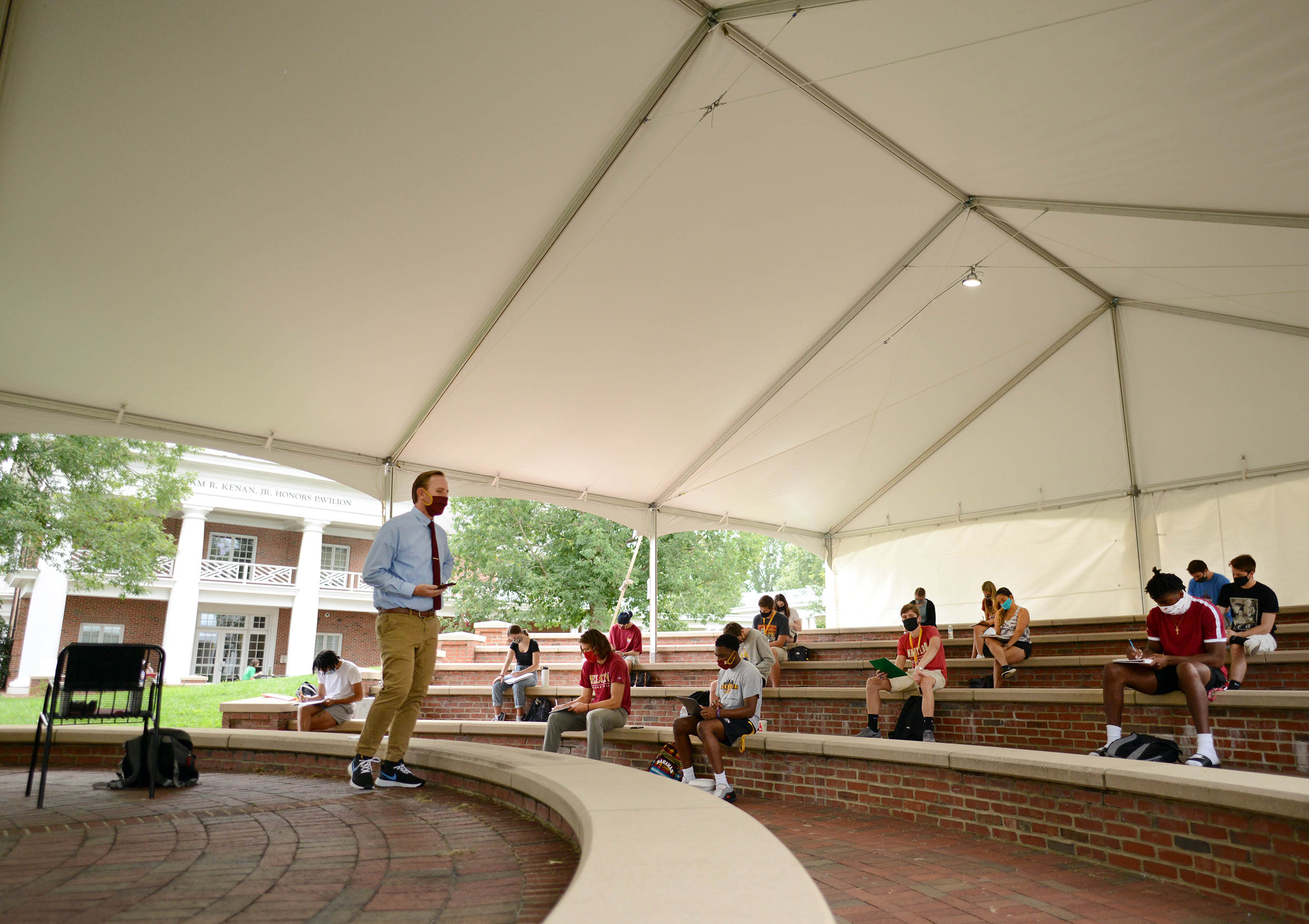This semester, Elon has erected tents around campus to provide outdoor learning spaces for students and faculty that present new environments for learning.
On a recent Monday, students in Assistant Professor Sandy Marshall’s Human Geography course emerged from under an expansive tent in front of Lindner Hall and spread out around Lambert Academic Pavilion.
They took time observing the surrounding environment — the white columns and red bricks of the buildings, the names affixed to each one that carry cultural and historical significance, the green grass of the common space in the center of the pavilion.
“I hope this awakens in you a geographical curiosity,” Marshall said to the students when they reconvened under the tent set up over the Lindner amphitheater. “There are all of these connections to different places and history, all embedded in this landscape.”
 It was a unique class session during a unique time when new guidelines and physical distancing restrictions are limiting the number of students who can gather at one time inside a classroom, and the traditional class meeting often combines in-person and remote components. As faculty members take creative approaches to how they structure their learning environments during the COVID-19 pandemic, they are taking advantage of these new outdoor spaces to teach their classes.
It was a unique class session during a unique time when new guidelines and physical distancing restrictions are limiting the number of students who can gather at one time inside a classroom, and the traditional class meeting often combines in-person and remote components. As faculty members take creative approaches to how they structure their learning environments during the COVID-19 pandemic, they are taking advantage of these new outdoor spaces to teach their classes.
Leading up to the start of the fall semester, Elon constructed six tents in spaces around campus that can be reserved by faculty for classes and another four tents that are available for student activities. The Lambert Academic Pavilion is home to two, with the second erected on Phi Beta Kappa Plaza. Other locations of tents around campus include Under the Oaks, by Sankey Hall, by Lakeside Dining Hall, by the Center for the Arts, at Koury Business Center, in the Global Neighborhood, at The Oaks and on Iconic Plaza.
The tents offer an open-air environment that allows for larger class gatherings than most classrooms. Students and faculty members still maintain physical distancing and adhere to the university’s face covering policy, with sanitizing supplies and hand sanitizer available at each tent. Along with providing gathering space for academic and student events, those tents near dining halls offer outdoor eating space.

Marshall said he viewed the Lindner Amphitheater tent as an opportunity to bring his full class of more than 20 students together at one time, since the size of their classroom requires them to split the class in two, with half participating in person and the other half remotely during each session, and alternating between sessions.
“Particularly early in the semester when we are still creating community, I wanted us to at least be together in the same location for one session,” Marshall said.
The subject matter lends itself to learning outside, Marshall said. Geography is all about observing the physical and cultural landscape, and the open-air tent provided ample opportunity throughout the class to do just that, with people passing by and buildings surrounding the learning space.
The experience did come with some challenges, such as having to speak up louder due to being outside and the fact that everyone was wearing masks. The breeze rustled paper handouts and sometimes sent them tumbling.
But for Jacqueline Vontersch ’24, the outdoor classroom was ideal. “I really like the fresh air and natural light,” Vontersch said while gathering her things at the end of class. “I definitely prefer this to meeting over Zoom, and it gives us a space that is even safer from a health standpoint.”



